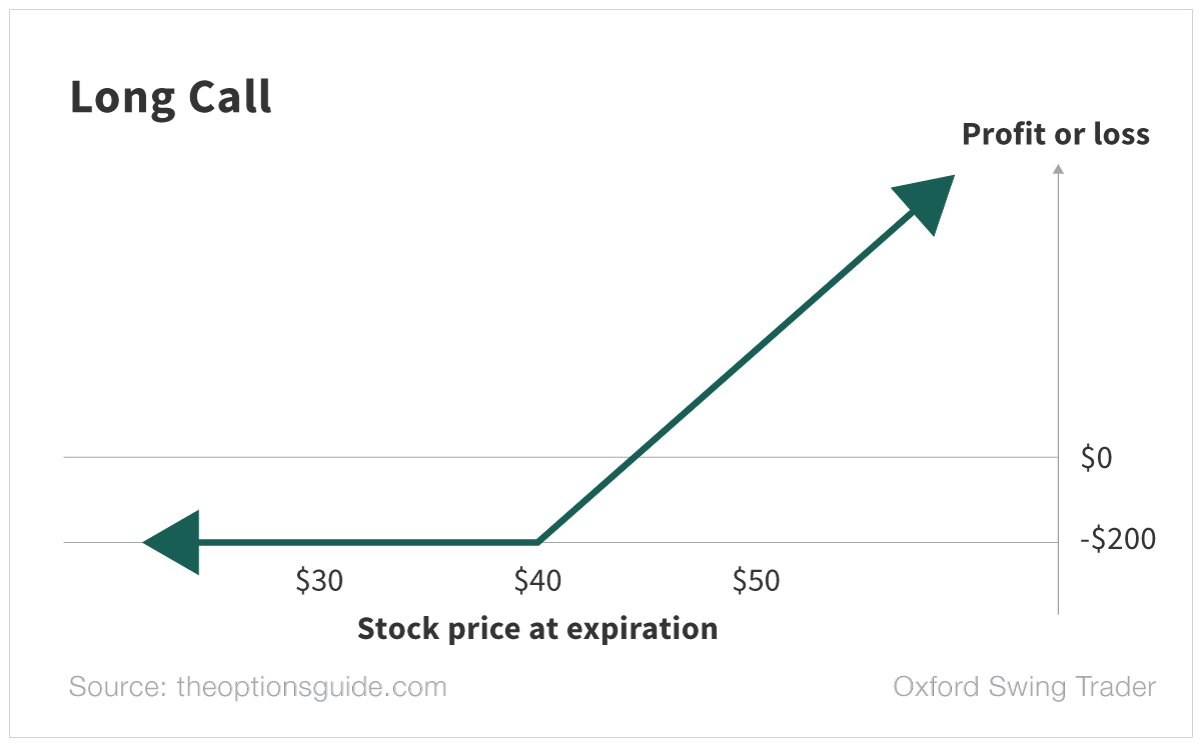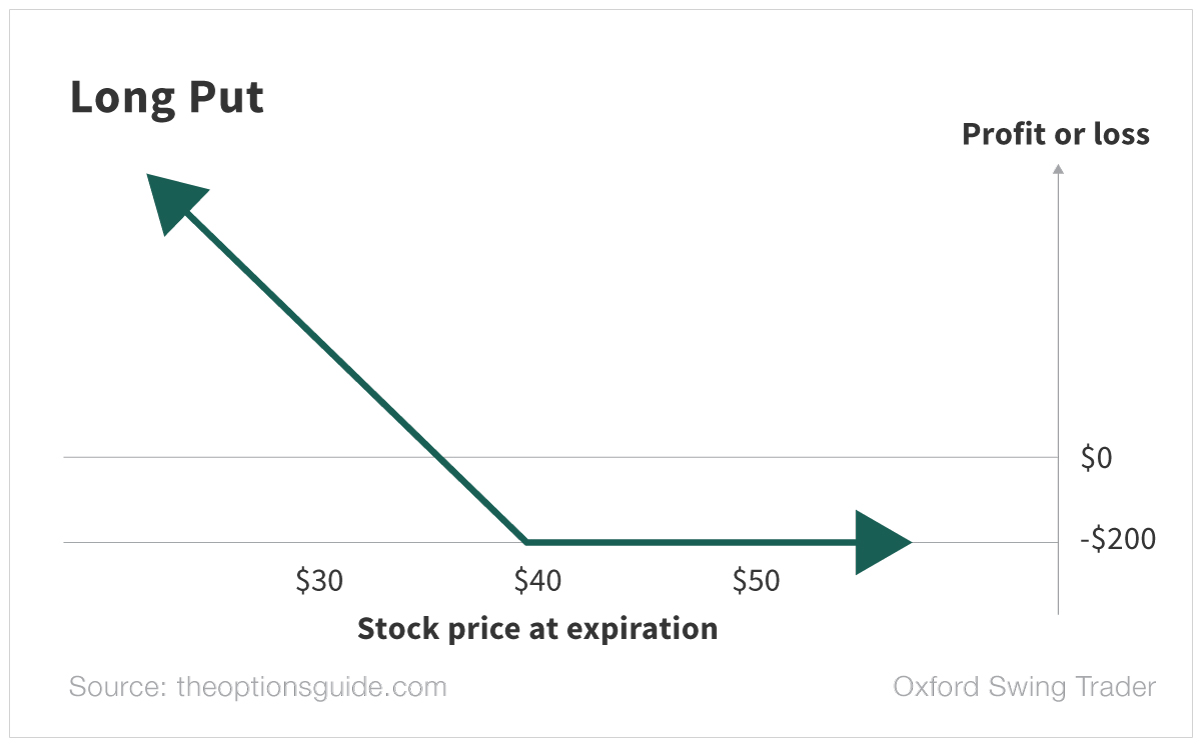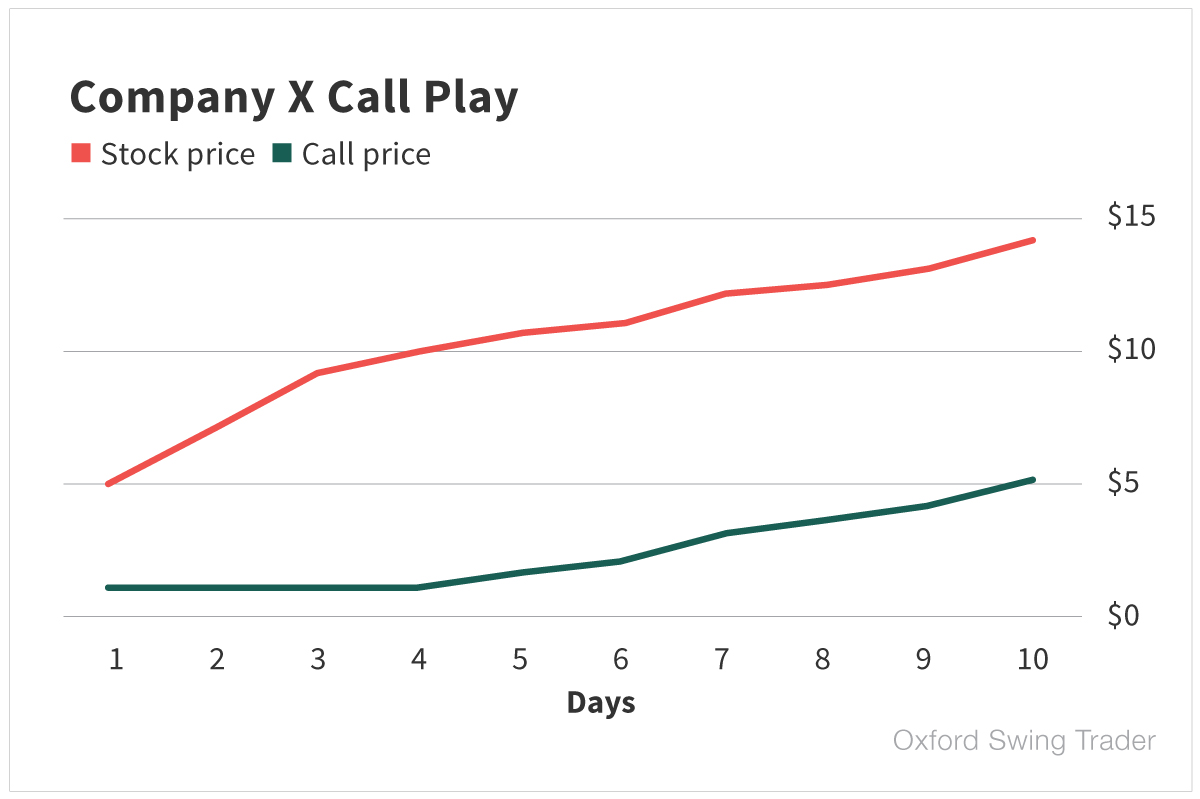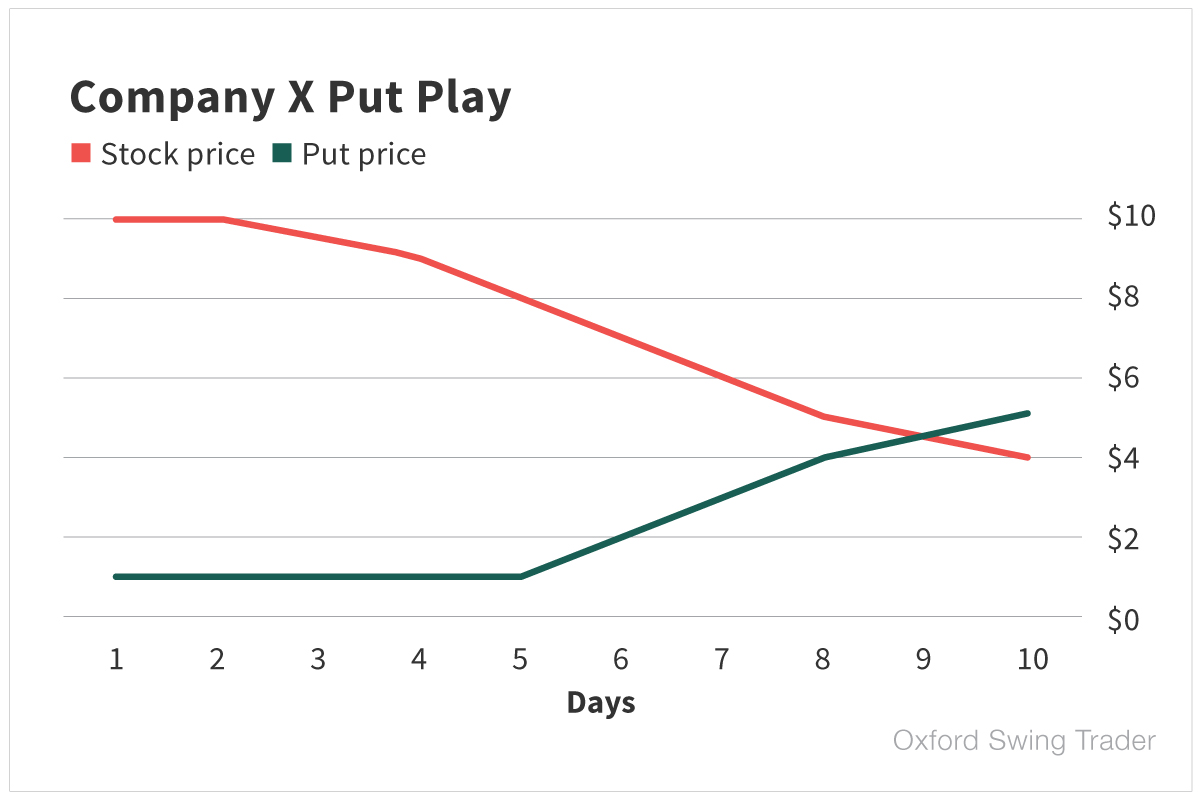Options Quick Start Guide

When it comes to short-term trading strategies like swing trading, options are one of the best ways to leverage quick movements in the market.
Options are intimidating to many investors at first. But while options listings might look a bit scarier than stock listings, they’re just as easy to trade, even if you have no investing experience whatsoever.
Options are a powerful tool that many traders don’t take full advantage of.
With options, you can frequently rack up double-, triple-, even quadruple-digit gains. They’re the perfect complement to a stock portfolio or can be traded on their own. Many people trade options exclusively.
Options: The Misunderstood Security
So what exactly is an option?
In essence, it’s a contract. It gives its holder the right – but not the obligation – to buy or sell 100 shares of a specific stock at a set price on a designated date.
Options are a special kind of security that can help you magnify movements in the stock market.
For example, if the value of an option’s underlying shares moves just 5% to 10%, the options associated with it could move 50%, 100% or more.
There are two types of options: calls and puts.
Calls give their holder the right – but not the obligation – to buy shares at a certain price, called the strike price.
Buying a call option is a bet that the price of the option’s underlying stock will rise above its strike price. It essentially givies the owner of the call option the ability to buy exposure to a stock a discount.
When the price of the stock rises above the strike price, those calls are referred to as “in the money.” If a call option’s strike price is below the price of its underlying stock, it is referred to as “out of the money.”

Puts are the opposite of calls. They give their holder the right – but, again, not the obligation – to sell shares of stock at a certain price.
A put is a bet that the price of the underlying shares will go below the option’s strike price and allow the holder to sell the options at a higher price.
If a put’s strike price is higher than the market value of its underlying stock, it’s in the money. If the strike price is less than the market price, it’s out of the money.

Traders almost never exercise the right to buy or sell shares. Most simply buy or sell, taking advantage of movements in the option’s price and then close their position before the option expires.
Now, this brings me to the first and most important rule of options…
Always – and I mean always – have an exit strategy before getting into an options position. For swing traders, option exits always occur when we exit a stock position.
Now let’s take a look at an example of an options listing and put everything together.
AAPL July 20XX $140 Call
This option is for Apple. The most popular options are monthly options, which expire on the third Friday of every month. So these options would expire on the third Friday in July.
On the expiration date, the options become worthless. On that date, you would be left with the choice of either buying shares at a premium or selling shares at a discount..
The number next to the expiration date is the strike price. That’s the price you’re betting the underlying stock will exceed or fall below.
Our example is a bet that Apple’s shares will exceed $140 per share. The higher the share price goes over $140, the more money we make.
How Are Options Valued?
Now that you know what options are, you’re probably wondering how they are valued.
To answer that, let’s take a look at an example of a call play and a put play.
Say we want to buy stock in a hypothetical company – Company X – trading for $5 per share. The company has just bottomed out after a five-day sell-off during which it declined from $8. It’s primed to swing right back up.
We can leverage this bet by buying the company’s call options, which expire in roughly two months. They’re trading for only $1 per share and have a strike price of $10.
Because an options contract represents 100 shares, the price overall is $1 multiplied by 100. So each contract costs the buyer $100.
With $500, we can buy five call options (five times the option price of $100).
When Company X’s share price rises past $10 on day five, our options go “in the money” with it. When it crosses past $11, we break even, after the cost of the option.
Say over 10 days, the company’s share price shoots up to $14. The call options are now $4 in the money.
With one month until expiration, we sell our calls at $400. That’s a profit of $300 per contract, after subtracting $100 for the cost of the option..
That’s a 200% gain.

For example, say you had $500 to risk. If you put that $500 into Company X shares, you would walk away with $1,400 – or a profit of $900 – from a 10-day trade. Not bad, all things considered.
But if you put your $500 into five of our Company X calls, you would walk away with a profit of $300 per contract. Since you bought five contracts at a price of $100 each, your total profit is $1,500.
Buying a put would work the opposite way.
Say we’re watching another company that trades at $10. We think its shares are very overbought and we expect it to fall. We believe the price will drop by at least 20%. So we buy $8 puts on it that expire one month from now for $1.
Remember, because an options contract represents 100 shares, each put option would cost $100.
The share price would have to drop to $7 for us to break even. Every amount lower than $7 would be pure profit.
That company begins to sell-off after an exceptionally bad earnings report, Its share price plummets to $4.

We sell our puts at $300 and again book a 200% gain.
Had you shorted the $500 worth of stock, you would have borrowed 50 shares at $10.
You would have then bought back those same $10 shares at $4, pocketing a gain of $6 per share. That’s a profit of $300 based on 50 shares. That’s a tidy 60% gain. But far less than the 200% gain on the options.
As you can see, options are an exceptionally good way of leveraging short-term movements in the market.
How to Trade Options
Now that you know all about how options work, you’re probably wondering how to trade options.
Well, once again, it’s not that different from buying and selling a stock.
You’ll see two numbers when you find an option you want to buy – the bid price and the ask price.
The bid price represents the maximum price that a buyer is willing to pay for an options contract.
The ask price represents the minimum price that a seller is willing to take for the same options contract.

A trade happens only after the buyer and seller agree on a price for the option.
The difference between the bid and the ask is called the spread. Generally, the narrower the spread, the more liquid the option.
The spread is an implied cost of trading.
For example, if you’re looking at an option with a bid and ask listed as $1 and $1.05, respectively, someone looking to buy the option would pay $1.05 while the person selling it would receive $1.
The $0.05 difference is pocketed by the market maker. That doesn’t sound like much, but remember that each contract represents 100 shares. So that $0.05 is actually $5.
Try to lock in the best price by buying and selling at the midpoint between the bid and the ask. Or place a limit order for the maximum price you are willing to pay.
Now, it’s a commonly held misconception that you need a special certification or account to trade options.
The truth is that if you have a brokerage account already and some money to trade with, you’re set.
All you have to do is let your broker know you’d like to trade options. You can trade them on your existing account or set up an account specifically for options trading.
It might take some time to familiarize yourself with all of the intricacies of options trading, but setting up an account to trade options can be done in as little as five minutes.
You can use any online brokerage to trade options. The average investor will have a similar experience with any of the major online brokers, like Charles Schwab, TD Ameritrade, Robinhood, etc.
Brokers used to charge fees of as much as $10 per contract. But that’s no longer the case. You should to place a trade for $1 at most.
Buying options is just as easy as buying stocks, but there are a couple of extra steps in the process. Start by looking up the options available for the stock you want.
Once you’re looking at the list, find the one that matches the expiration date and strike price of my recommendation.
Once you’ve found it, select the number of contracts you want to purchase and click “buy to open.”
It’s that simple. It shouldn’t take more than three minutes.
Now, I’ve mentioned that you should never enter an options position without an exit strategy.
You shouldn’t, but don’t worry. You won’t have to figure out your exit strategy for yourself.
I will let you know when to buy and when to sell.
Let’s look at an example of buying a Facebook (Nasdaq: FB) call.

Once you’ve found the one you want, click into the option page.

Then simply type in how many of that option you want to buy and click “buy to open” or something similar depending on the broker you’re using.

And that’s all there is to it. As you can see, buying an option is no more complicated than buying a stock.
Now you have all the information you need to trade options. Start small until you get the hang of it. And soon you’ll be trading one of the most misunderstood securities that will allow you to use your money to its full potential.